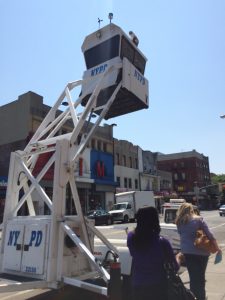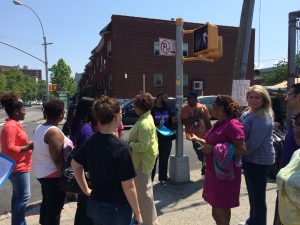
20 Sep How Poverty Has Affected My Scholars and What I Did to Train My Staff

Children who live in poverty deal with an overwhelming burden of trying to survive through social inequities that limits their access to future possibilities and threatens their academic success. Mott Hall Bridges Academy is a middle school that serves sixth to eight grade, yet our scholars are below grade levels in both reading and math. The average incoming scholar is on a third grade reading level, with some as low as kindergarten. In some households parents are can barely read or write, while others lack resources such as books and magazines for their children to practice building their literacy skills on a daily basis.

For many of my scholars living in a community like Brownsville, Brooklyn they deal with the daily reality of gun violence, gangs, high pregnancy rates, a low percentage of graduation from high school, and a myriad of health risks due to poor nutrition. Post-traumatic stress disorder, anxiety, depression, and uncontrollable anger are part of the mental health issues that affect many families and go untreated because of the stigmatism associated with seeking professional help. The complexity of this neighborhood has resulted in low parental involvement that has made it difficult for teachers to remain hopeful and believe that children in poverty are capable of academic achievement. The feeling of helplessness and defeat not only impacts the self-esteem of children, but also creates a glass ceiling that seeks to limit their future possibilities.

This is why a few years ago I instituted an annual community walk for my entire staff, so they could experience, even if for only one-day, the living conditions and lack of opportunities that exist throughout Brownsville. The first time we did this exercise it was eye opening because many of the teachers made assumptions about the scholars prior knowledge and their ability to access simple things like a library, bookstores, computer centers, and even fresh fruits or vegetable in the supermarket. When teachers would assign activities that required the use of a computer, they failed to realize that many of our scholars lacked the technology or Internet capability necessary to complete an assignment. The also expected the children to get books that may in be in their local libraries, but due to the gang presence and their control of various housing development, it is nearly impossible for many of the scholars to walk to the library.
My staff members realize their personal assumptions and the things they often take for granted. It also reinforces how experiences within our classrooms can have a tremendous impact on the lives of children and their community that can break the cycle of poverty. I believe it is our responsible to teach our children that education is priceless, which offers a wealth of knowledge. Here are five ways to working in communities that are disadvantaged:
- Community Walks and Discussions – Not only do I take my staff on community walks in Brownsville, I also have my scholars tour other neighborhoods so they become aware of the disparities that exist. Despite the normalization of living with the inequities within their community, it is important that they know there is a landscape of opportunity they need to explore. Planting the seed of possibilities not only drives them to become curious about the world and take accountability for their work, but it also allows our scholars to see education is valuable.
- Skype Talks – Transportation or technology may be limited, but the use of one computer, along with project or SmartBoard, can offer our scholars the opportunity to connect with people beyond their classroom. This is helpful for building communication and creating a global learning space that allows children to meet individuals who can share their journey and empower the next generation.
- Choose your Words – There is power in the words you choose when speaking to children. “You are significant”; “you are exceptional”; “you are worthy”, “you can do it, I believe in you”; “you are more than enough’; “you are not invisible” deposits value into the souls of children who are often surrounded by unimaginable circumstances. When children are made to feel good about them and believe that others are invested in their success, they will thrive.
- Create Partnerships – Building relationships with companies and individuals, not only provides opportunities that can go beyond the classroom, but it also increases human capital. In the eight years that MHBA has been open, I have been able to expose my scholars to colleges, careers, programs, special events, and mentors for free! There are so many people willing to give, all they need to know is how they can help and you would be surprise at what you can get.
- Design a Positive Space – Poverty does not define one’s destination; instead it builds skills to survive life’s harshest circumstance. Resilience, determination, and the ability to overcome are qualities that educators must leverage in the classroom. Our children show up because they want to learn, they need structure, and find comfort being in school. Make sure to create a space that is inviting and reminds children, as well at the adults that they are wanted and appreciated. It was important for me to also provide my staff and scholars with mental health support services to ensure that they can be heard and unashamed to receive help to manage situations that require individuals who are trained to support them.

